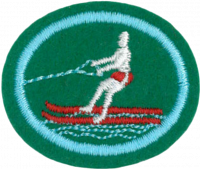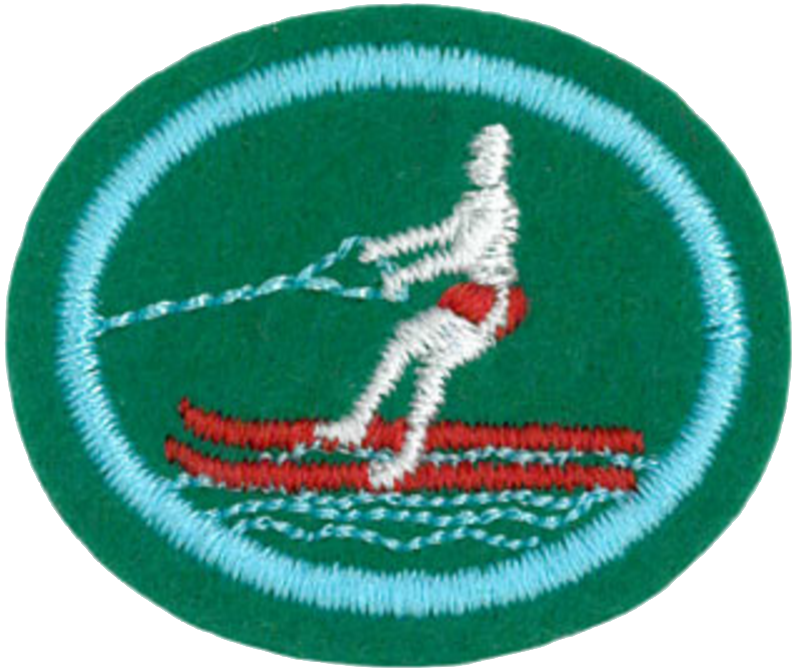Difference between revisions of "AY Honors/Water Skiing/Answer Key/es"
From Pathfinder Wiki
< AY Honors | Water SkiingAY Honors/Water Skiing/Answer Key/es
(Created page with "</noinclude>") |
(Updating to match new version of source page) |
||
| (8 intermediate revisions by 2 users not shown) | |||
| Line 1: | Line 1: | ||
| − | + | {{HonorSubpage}} | |
| − | + | <!--{{Honor_Master|honor=Water Skiing|master=Aquatic}}--> | |
| − | {{ | ||
| − | |||
| − | |||
| − | |||
| − | |||
| − | |||
| − | |||
| − | |||
| − | }} | ||
| − | |||
| − | {{Honor_Master | ||
| − | |||
| − | |||
| − | |||
<section begin="Body" /> | <section begin="Body" /> | ||
{{ansreq|page={{#titleparts:{{PAGENAME}}|2|1}}|num=1}} | {{ansreq|page={{#titleparts:{{PAGENAME}}|2|1}}|num=1}} | ||
<noinclude></noinclude> | <noinclude></noinclude> | ||
<!-- 1. Tener la especialidad de Natación II. --> | <!-- 1. Tener la especialidad de Natación II. --> | ||
| − | {{honor_prerequisite | + | {{honor_prerequisite|honor=Swimming - Intermediate|displayname=Natación II}} |
<noinclude></noinclude> | <noinclude></noinclude> | ||
{{CloseReq}} <!-- 1 --> | {{CloseReq}} <!-- 1 --> | ||
| Line 106: | Line 92: | ||
<noinclude></noinclude> | <noinclude></noinclude> | ||
| − | {{clear}} | + | {{clear}} |
<noinclude></noinclude> | <noinclude></noinclude> | ||
| Line 128: | Line 114: | ||
{{ansreq|page={{#titleparts:{{PAGENAME}}|2|1}}|num=4}} | {{ansreq|page={{#titleparts:{{PAGENAME}}|2|1}}|num=4}} | ||
<noinclude></noinclude> | <noinclude></noinclude> | ||
| − | <!-- 4. | + | <!-- 4. Poner los esquís en aguas profundas. Ejecutar una arrancada desde aguas profundas sobre dos esquís con una línea completa de cuerda. --> |
| − | + | Practicar, practicar, practicar. Debe realmente tener un instructor para esta especialidad. | |
<noinclude></noinclude> | <noinclude></noinclude> | ||
| Line 135: | Line 121: | ||
{{ansreq|page={{#titleparts:{{PAGENAME}}|2|1}}|num=5}} | {{ansreq|page={{#titleparts:{{PAGENAME}}|2|1}}|num=5}} | ||
<noinclude></noinclude> | <noinclude></noinclude> | ||
| − | <!-- 5. | + | <!-- 5. Cruzar con éxito las dos estelas. --> |
| − | |||
<noinclude></noinclude> | <noinclude></noinclude> | ||
| Line 152: | Line 137: | ||
<noinclude></noinclude> | <noinclude></noinclude> | ||
| − | + | {{clear}} | |
<noinclude></noinclude> | <noinclude></noinclude> | ||
| Line 158: | Line 143: | ||
{{ansreq|page={{#titleparts:{{PAGENAME}}|2|1}}|num=6c}} <!--T:29--> | {{ansreq|page={{#titleparts:{{PAGENAME}}|2|1}}|num=6c}} <!--T:29--> | ||
<noinclude></noinclude> | <noinclude></noinclude> | ||
| − | |||
<noinclude></noinclude> | <noinclude></noinclude> | ||
| Line 165: | Line 149: | ||
<noinclude></noinclude> | <noinclude></noinclude> | ||
| − | + | {{clear}} | |
<noinclude></noinclude> | <noinclude></noinclude> | ||
| Line 171: | Line 155: | ||
{{CloseReq}} <!-- 6 --> | {{CloseReq}} <!-- 6 --> | ||
<noinclude></noinclude> | <noinclude></noinclude> | ||
| − | == | + | ==Referencias== |
| − | |||
| − | |||
| − | |||
<noinclude></noinclude> | <noinclude></noinclude> | ||
| − | + | {{CloseHonorPage}} | |
| − | |||
Latest revision as of 19:34, 14 July 2022
Esquí acuático
Nivel de destreza
2
Año
1961
Version
22.12.2025
Autoridad de aprobación
Asociación General
1
Tener la especialidad de Natación II.
Para consejos e instrucciones, véase Natación II.
2
Conocer y practicar las siguientes normas de seguridad:
2a
Nunca esquiar por la noche.
2b
Nunca esquiar durante una tormenta eléctrica.
2c
Siempre usar un chaleco de esquí, mientras sale a esquiar.
2d
Revisar para asegurarse de que la hebilla del chaleco esté bien cerrada.
2e
Asegurarse de que la cuerda de esquí se encuentre en condición adecuada.
2f
Asegurarse de que las fijaciones del esquí estén en buenas condiciones.
2g
Disponer de un observador o un espejo en el bote del esquí.
2h
Mantenerse alejado de objetos, como los otros esquiadores, nadadores, muelles o de objetos flotantes.
2i
Si se produce una caída, soltar la cuerda.
2j
Después de una caída, levantar la mano para indicar que se encuentra bien.
2k
No estar de pie en el bote del esquí mientras está en movimiento.
3
Conocer las siguientes señales de mano:
3a
Más lento
3b
Buena velocidad
3c
Más rápido
3d
Volver al muelle
3e
Alto
3f
Girar
4
Poner los esquís en aguas profundas. Ejecutar una arrancada desde aguas profundas sobre dos esquís con una línea completa de cuerda.
Practicar, practicar, practicar. Debe realmente tener un instructor para esta especialidad.
5
Cruzar con éxito las dos estelas.
6
Identificar los siguientes:
6a
Esquí doble
6b
Esquí Slalom
6c
Esquí de Figuras de tipo Trick
6d
Tabla de rodillas (Kneeboard)


